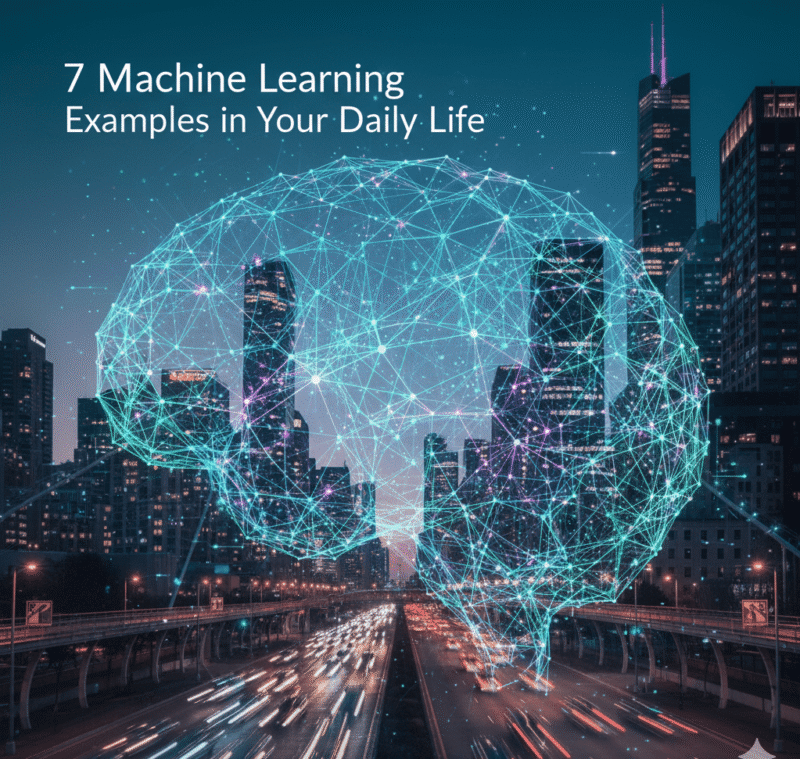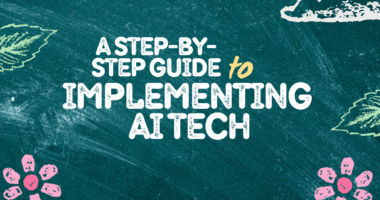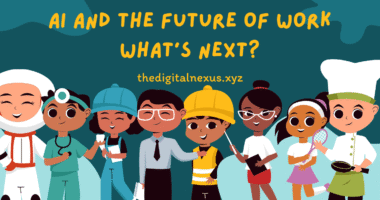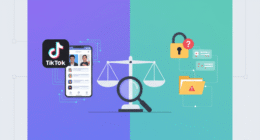“Machine learning” can sound like a complex, futuristic term reserved for scientists and data experts. However, you might be surprised to learn that you use it every single day. In fact, machine learning is the quiet engine running behind many of your favorite apps and services. It is not about scary robots; it is about making technology smarter and more helpful. This guide, therefore, will show you seven simple machine learning examples that are already a part of your daily routine.
Example 1: Your Personalized Streaming Recommendations
Have you ever wondered how Netflix just seems to *know* what movie you want to watch next? Or how Spotify creates a “Discover Weekly” playlist that is full of your new favorite songs? This is one of the most common machine learning examples in action.
These platforms analyze huge amounts of data. For instance, they look at what you have watched or listened to, what you have skipped, and even what time of day you use the app. Then, the machine learning algorithms find patterns. They compare your tastes with millions of other users. As a result, they can make surprisingly accurate predictions about what you will enjoy. It is like having a personal entertainment curator who knows you better than you know yourself.
Example 2: The Unsung Hero – Your Email Spam Filter
Your email inbox would be an unusable mess without machine learning. Every day, spam filters protect you from a flood of junk mail and potential scams. This is a classic example of a classification problem solved by machine learning.
The algorithm is trained on a massive dataset of emails. It learns to identify the characteristics of spam, such as suspicious links, certain keywords, or unusual sender information. When a new email arrives, the system quickly classifies it as either “spam” or “not spam.” Furthermore, it learns from you. When you mark an email as spam, you are providing new data that helps the system get even smarter over time.
</ax`rticle>
Example 3: How Social Media Knows What You Like
The news feeds on platforms like Instagram, TikTok, and Facebook are not random. They are carefully curated by powerful machine learning algorithms. The goal is to show you content that will keep you engaged and scrolling.
These systems track everything you do. For example, they monitor which posts you like, which videos you watch all the way through, and which accounts you follow. Over time, they build a detailed profile of your interests. This allows them to prioritize content they think you will find interesting. This is a powerful use of machine learning examples to personalize your online experience.
Example 4: “Customers Also Bought…” – E-commerce Suggestions
When you shop on a site like Amazon, you will often see a section that says “Customers who bought this item also bought…” or “Frequently bought together.” This is not just a guess; it is a sophisticated form of machine learning called collaborative filtering.
The system analyzes the purchase history of millions of customers. It finds items that are often bought in the same transaction. So, when you add a product to your cart, the algorithm can instantly suggest other items that people with similar tastes have purchased. This is one of the key machine learning examples that drives online sales.
Example 5: Dynamic Pricing in Ride-Sharing Apps
If you have ever used Uber or Lyft, you have likely noticed that the price for the same trip can change depending on the time of day. This “surge pricing” is managed by machine learning.
The algorithms analyze real-time data, including the number of available drivers, the number of ride requests, traffic conditions, and even the weather. Based on these factors, they predict the current supply and demand and adjust the price accordingly. This is a real-world application of machine learning that balances the marketplace for both riders and drivers.
Example 6: The Magic Behind Your Search Results
Search engines like Google are perhaps the most powerful machine learning examples we use. When you type a query, a complex system of algorithms works to understand what you mean and provide the most relevant results.
As explained on the Google AI Blog, these systems do more than just match keywords. They analyze the context of your search and the quality of the websites to rank the results. Machine learning also powers features like autocomplete and the “People also ask” section, constantly learning from billions of searches to improve its accuracy.
Example 7: Talking to Your Digital Voice Assistant
When you talk to Siri, Alexa, or the Google Assistant, you are interacting with advanced machine learning. Natural Language Processing (NLP), a subfield of AI, allows these assistants to understand your spoken words.
The machine learning models are trained on a huge library of human speech. This allows them to recognize words, understand grammar, and even figure out the intent behind your questions. Every time you use your assistant, you are helping it learn and improve its ability to understand you. This technology is also a key component in the broader trend of AI in digital marketing.
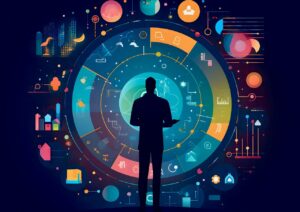
Conclusion: Machine Learning is Already a Part of Your Life
In conclusion, machine learning is not some far-off, complicated idea. It is a practical tool that is already woven into the fabric of your daily life. From the shows you watch to the emails you read, these smart systems are constantly working in the background to make your digital experiences more personal, efficient, and helpful. So, the next time your phone suggests the perfect reply to a text, you will know that it is not magic; it is just one of the many amazing machine learning examples at work.
Can You Think of Another Example?
What other examples of machine learning have you noticed in your daily life? Share them in the comments below! Download our free “Simple Guide to AI & ML Terms” to learn more.
